#cultural impact of cinema
Text
Film Review: Mastering Elegance on Screen: How 'The Devil Wears Prada' Became a Timeless Cinematic Jewel
Andy (Anne Hathaway) whispers some important information to her fashion magazine editor boss, Miranda Priestly (Meryl Streep).PHOTOGRAPHS TO BE USED SOLELY FOR ADVERTISING, PROMOTION, PUBLICITY OR REVIEWS OF THIS SPECIFIC MOTION PICTURE AND TO REMAIN THE PROPERTY OF THE STUDIO. NOT FOR SALE OR REDISTRIBUTION.
Watching an older film offers a delightful journey down memory lane, where one can…

View On WordPress
#Anne Hathaway#behind-the-scenes drama#character transformation#character-driven storytelling#cinematic artistry#cinematic classic#cultural impact of cinema#director Rose Glass#Emily Blunt#emotional resonance in film.#empowerment through adversity#enduring film narratives#ensemble cast performance#fashion movie#film industry satire#film review#high fashion and film#iconic movie lines#Inspirational Movies#Meryl Streep#movie masterpiece#personal growth in cinema#strong female leads#The Devil Wears Prada#timeless films#workplace challenges
4 notes
·
View notes
Text
The long-awaited sequel to one of the highest grossing movies of all time has come out, and it's not even made it to the trending page. I've seen more posts about the Barbie (2023) movie trailer than I have for Avatar: The Way of the Water (I have not seen a single post). I've heard that James Cameron was planning on making this a 5 movie series, but I feel like this is going to be the end of that dream...
#this is the movie equivalent of your partner saying their going to fuck you all night#and then ejaculating 3 minutes in and getting wiped out#i feel like we're going to get the announcement in a couple weeks that avatar became a massive flop#and all future sequels have been shelved#i dont even think the original avatar made a cultural impact either#despite being the highest grossing movie of all time#i think it was only seen as a showcase of the potential of cgi#which probably is why marvel movies are the way they are now#anyway im hoping this is going to be a massive flop for disney#and with the fantastic beasts movies also being shelved#i am hoping to see the end of franchise moves in cinemas#and we can go back to seeing higher quality low budget stand alone story telling#like please give me a well crafted rom com#that isnt exclusively released on a streaming service#and the only pull is the 2 main leads are hot movie stars#avatar#i personally will not be seeing this movie#saving my love for Barbie#and for across the spiderverse
8 notes
·
View notes
Text
Brando - The Man In The Leather Jacket
New Post has been published on http://esonetwork.com/brando-the-man-in-the-leather-jacket/
Brando - The Man In The Leather Jacket
This week on Tales from Hollywoodland, Arthur, Julian, and Steve explore the mannerisms, machismo, and mythos of the truly iconic actor, Marlon Brando. From yelling “Stella!” so memorably in A Streetcar Named Desire, to his mumblings in the jungle in Apocalypse Now, with a visit along the way to The Wild One, Guys and Dolls, The Young Lions, The Godfather, and so much more, they explore the man who changed acting forever.
Links
Tales From Hollywoodland on Facebook
https://www.facebook.com/talesfromhollywoodland
Tales From Hollywoodland on Instagram
https://www.instagram.com/talesfromhollywoodland/
Tales From Hollywoodland on YouTube
https://www.youtube.com/channel/UCdLX2kbwHqdn47FNN6vVN7Q
We want to hear from you! Feedback is always welcome. Please write to us at [email protected] and why not subscribe and rate the show on Apple Podcast, Spotify, iHeartRadio, Goodpods, PlayerFM, YouTube, Pandora, Amazon Music, Audible, and wherever fine podcasts are found.
#MarlonBrandopodcast #HollywoodlegendMarlonBrando #TalesFromHollywoodlandepisode #MarlonBrandocareerretrospective #Brandosactinglegacy #HollywoodiconMarlonBrando #Brandosimpactoncinema #Methodactingpodcast #Brandofilmographyanalysis #ClassicHollywoodpodcast #HollywoodGoldenAge #MarlonBrandobiography #Hollywoodactorspotlight #Brandosmemorableroles #Hollywoodactingtechniques #Brandosinfluenceonactors #HollywoodstarMarlonBrando #Brandosculturalsignificance #Hollywoodpodcastdiscussion #Brandoscontributiontofilmhistory
#Arthur Friedman#Brando filmography analysis#Brando's acting legacy#Brando's contribution to film history#Brando's cultural significance#Brando's impact on cinema#Brando's influence on actors#Brando's memorable roles#Classic Hollywood podcast#Hollywood acting techniques#Hollywood actor spotlight#Hollywood Golden Age#Hollywood icon Marlon Brando#Hollywood legend Marlon Brando#Hollywood star Marlon Brando#Marlon Brando biography#Marlon Brando career retrospective#Marlon Brando podcast#Steven Jay Rubin#Tales From Hollywoodland
0 notes
Text
Movie Analysis and Review: "One Flew Over the Cuckoo’s Nest" (1975)
Introduction:One Flew Over the Cuckoo’s Nest is a cinematic masterpiece that garnered critical acclaim and multiple Academy Awards upon its release in 1975. It delves into the timeless struggle between individual freedom and societal conformity within the confines of a mental institution. Led by the iconic performances of Jack Nicholson and Louise Fletcher, the film captivates audiences with its…
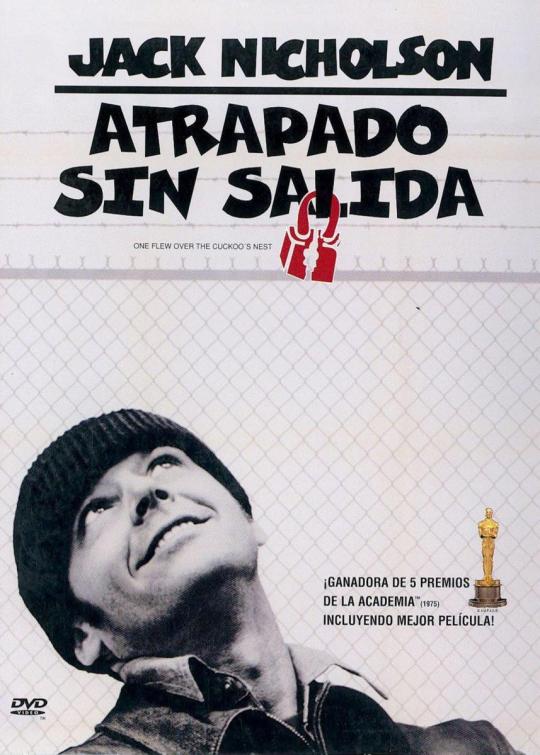
View On WordPress
#1970s Cinema#Academy Awards#Authoritarianism#Character Development#Cinematic Masterpiece#Cinematic Techniques#Classic Film#Conformity#Counterculture Movement#Critique#Cultural Impact#Ensemble Cast#Farid M. H. Sadeqi#Farid Sadeqi#Film Analysis#Freedom#Hosein Tolisso#Human Rights#Individualism#Institutionalization#Jack Nicholson#Louise Fletcher#Mental Health#Mental Institution#Miloš Forman#Mohammad Hosein Sadeqi#Movie Review#Power Dynamics#Psychological Drama#Rebellion
0 notes
Text
From Wrestler to Actor: The Multifaceted Career of Dara Singh
Dara Singh Randhawa, also known as the “Rustam-e-Hind,” was a legendary wrestler, actor, and politician from India. He is widely regarded as one of the most prominent wrestlers in Indian history and was also an accomplished actor who appeared in over 140 films. Dara Singh’s life was an inspiration for many, and his contributions to Indian wrestling and cinema will never be forgotten.
Early Life…

View On WordPress
#apnaran#अपनारण#ब्लॉग्स#blogs#education#india#litlikesunlight#ADMIN#apna ran#Dara Singh Randhawa#Dara Singh: A Pioneer in Indian Wrestling#Remembering Dara Singh: A Role Model for Generations to Come.#The Impact of Dara Singh on Indian Cinema and Culture#The Legendary Career and Legacy of Dara Singh
0 notes
Note
Was the Comics Code as bad as the Hays Code?
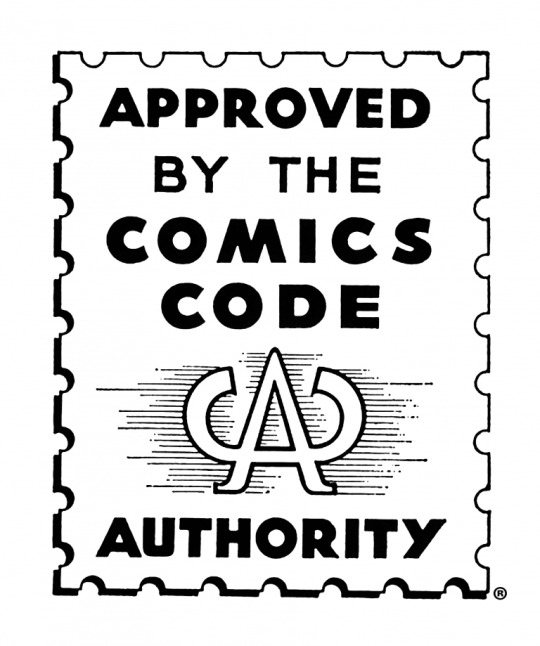
That's a really good question!
I suppose it depends on what you mean by "as bad" - are we talking about the overall impact of the Code on American pop culture or are we talking about the actual content of the Code and what it banned and/or mandated in terms of artistic expression?
I've written a little bit about the Hays Code here, but my main focus was on subtextual judaism in Hollywood generally rather than what the Code was and what its impact on American cinema was.

So what did the Hays Code actually include?
One of the few positive things you can say about it is that the men who devised it were quite clear and forthright about what would and wouldn't be allowed, in comparison to the vagueness and inconsistency of the modern MPAA. So here's the list of what couldn't be shown:
Pointed profanity—by either title or lip—this includes the words God, Lord, Jesus, Christ (unless they be used reverently in connection with proper religious ceremonies), Hell, S.O.B., damn, Gawd, and every other profane and vulgar expression however it may be spelled; (You'll notice that the Code is very much a snapshot of the transition from silent movies to "talkies," with the discussion of how profanity is spelled as well as produced via "lip.")
Any licentious or suggestive nudity—in fact or in silhouette; and any lecherous or licentious notice thereof by other characters in the picture;
The illegal traffic in drugs;
Any inference of sex perversion; (i.e anything having to do with LGBT+ people and culture. For more on the impact of the Hays Code on the LGBT+ community, see the excellent documentary the Celluloid Closet.)
White slavery; (the 1920s version of sex trafficking, but with added racism!)
Miscegenation;
Sex hygiene and venereal diseases;
Scenes of actual childbirth—in fact or in silhouette;
Children's sex organs;
Ridicule of the clergy;
Willful offense to any nation, race or creed; and (this one was really honored in the breach more than the observance when it came to nations, races, and creeds of non-dominant groups in society.)
The following things could be shown, but "special care be exercised in the manner in which the following subjects are treated, to the end that vulgarity and suggestiveness may be eliminated and that good taste may be emphasized:"
The use of the Flag;
International Relations (avoid picturizing in an unfavorable light another country's religion, history, institutions, prominent people and citizenry); (again, depended a lot on what country you're talking about.)
Arson;
The use of firearms;
Theft, robbery, safe-cracking, and dynamiting of trains, mines, buildings, et cetera (having in mind the effect which a too-detailed description of these may have upon the moron); (I guess the idea was that the MPPDA believed very strongly in the idea that media could affect people's behavior through imitation, but the use of the word "moron" gives me eugenics vibes.)
Brutality and possible gruesomeness;
Technique of committing murder by whatever method;
Methods of smuggling;
Third-Degree methods; (i.e, torture)
Actual hangings or electrocutions as legal punishment for crime;
Sympathy for criminals; (this was a big one; Hollywood had done very well from gangster films, so a lot of creators had to do some careful threading of the needle to keep the genre alive. One dodge that they came up with was that they would have a duplicate "final reel" in which the gangster would have their inevitable comeuppance, and then remove the final reel when the censors had left the theater. Very popular with white rural teens.)
Attitude toward public characters and institutions; (again, Hollywood shifting from being anti- to pro-establishment.)
Sedition;
Apparent cruelty to children and animals;
Branding of people or animals;
The sale of women, or of a woman selling her virtue;
Rape or attempted rape;
First-night scenes; (i.e, wedding nights)
Man and woman in bed together; (hence the eventual TV practice of showing married couples in separate beds in the 50s)
Deliberate seduction of girls;
The institution of marriage;
Surgical operations;
The use of drugs;
Titles or scenes having to do with law enforcement or law-enforcing officers;
Excessive or lustful kissing, particularly when one character or the other is a "heavy".
So in general, we can say that the Hays Code was extremely sex-negative, very concerned about crime and anti-establishment thinking, sexist, racist, and homophobic, and in general afraid of offending anybody.
So what about the Comics Code Authority?
So this is what the Comics Code looked like in 1954:
Crimes shall never be presented in such a way as to create sympathy for the criminal, to promote distrust of the forces of law and justice, or to inspire others with a desire to imitate criminals.
If crime is depicted it shall be as a sordid and unpleasant activity.
Policemen, judges, government officials, and respected institutions shall never be presented in such a way as to create disrespect for established authority.
Criminals shall not be presented so as to be rendered glamorous or to occupy a position which creates a desire for emulation.
In every instance good shall triumph over evil and the criminal punished for his misdeeds.
Scenes of excessive violence shall be prohibited. Scenes of brutal torture, excessive and unnecessary knife and gunplay, physical agony, the gory and gruesome crime shall be eliminated.
No comic magazine shall use the words "horror" or "terror" in its title.
All scenes of horror, excessive bloodshed, gory or gruesome crimes, depravity, lust, sadism, masochism shall not be permitted.
All lurid, unsavory, gruesome illustrations shall be eliminated.
Inclusion of stories dealing with evil shall be used or shall be published only where the intent is to illustrate a moral issue and in no case shall evil be presented alluringly, nor so as to injure the sensibilities of the reader.
Scenes dealing with, or instruments associated with walking dead, torture, vampires and vampirism, ghouls, cannibalism, and werewolfism are prohibited.
Profanity, obscenity, smut, vulgarity, or words or symbols which have acquired undesirable meanings are forbidden.
Nudity in any form is prohibited, as is indecent or undue exposure.
Suggestive and salacious illustration or suggestive posture is unacceptable.
Females shall be drawn realistically without exaggeration of any physical qualities.
Illicit sex relations are neither to be hinted at nor portrayed. Rape scenes, as well as sexual abnormalities, are unacceptable.
Seduction and rape shall never be shown or suggested.
Sex perversion or any inference to same is strictly forbidden.
Nudity with meretricious purpose and salacious postures shall not be permitted in the advertising of any product; clothed figures shall never be presented in such a way as to be offensive or contrary to good taste or morals.[16]
You'll notice the similarities when it comes to the Codes' attitude to sex, sexuality, crime, and symbols of authority - so to answer the first part of your question, I would say the CCA was pretty similar to the Hays Code (in part because Charles F. Murphy, who drew it up, was deeply unoriginal and basically cribbed off the Hays Code throughout).
However, there are also some significant areas of difference that have a lot to do with the unique circumstances of the 1950s moral panic over comics. See, in the 1950s, superhero comics were considered deeply uncool and old hat - they had been huge in the 40s during the war, but by the 50s the biggest genre in comics were horror, crime, and romance comics (with cowboy comics bringing up the rear). To quote myself from another post:
"This gave rise to a moral panic in the 1950s, although more accurately it was part of the larger moral panic over juvenile delinquency. The U.S Senate established a Juvenile Delinquency Subcommittee of the Judiciary Committee in 1953 to investigate the causes of juvenile delinquency and comics became a major target. While Wertham’s book is best known today for its assertions that Batman and Robin were teaching young boys to be gay and Wonder Woman was teaching young girls to be lesbians, the main focus of the Subcommittee [edit mine: and Wertham's academic work] was on horror and crime comics for their depiction of sex, violence, and “subversive” attitudes to law and order."
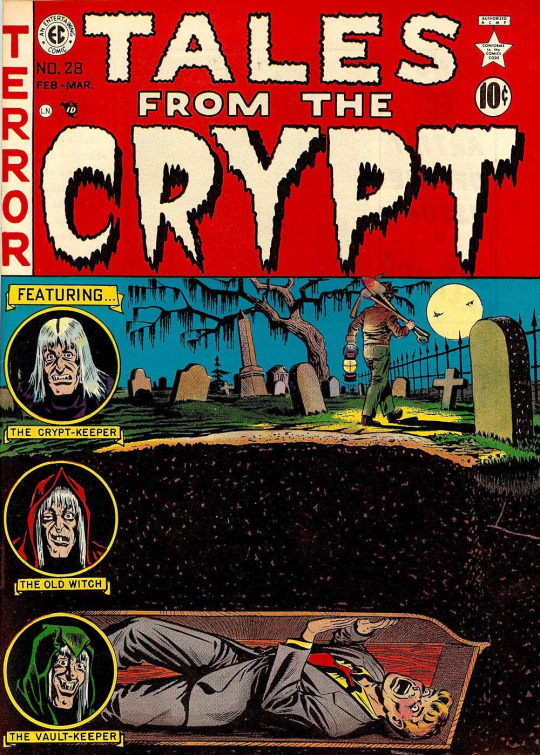
The CCA made it impossible to publish two of the most popular genres in the industry for a generation (the CCA relaxed its stance on horror stuff a bit in the 70s, which is why Marvel trend-chased werewolves and vampires the moment they could get away with it), which not only scrambled the medium (and potentially created space for the Silver Age of superhero comics to flourish) but drove the former titan EC Comics practically out of business. (Indeed, William Gaines of EC Comics believed that the CCA had been specifically worded to drive him out of business.)
So in some ways, the CCA was worse.
#subtexual judaism#cultural history#film history#hays code#comics#comics meta#comics code authority#cinema
190 notes
·
View notes
Text
Uncovering The Hidden City: Depictions of the Siege of Gondolin in Popular Culture
KEY WORDS: Gondolin, Hidden City, Turgon, Idril, Tuor, Maeglin, First Age, Morgoth, Earendil, siege, theater, literature, radio, cinema, pop culture
Viewing options: AO3 | SWG
Not much is remembered of the famed Elven stronghold of Gondolin, but of a few things we are relatively certain: It was ruled over by King Turgon, son of high king Fingolfin; it kept itself hidden from the forces of the so-called “dark lord” Morgoth for centuries through a policy of careful isolationism; and it was eventually betrayed by Turgon’s nephew, his sister-son Maeglin Lómion.
What texts survive from the First Age—and few enough of the Gondolindrim survived both the sack of Gondolin and the Third Kinslaying to tell their tales—paint an incomplete picture, and since the end of that Age, we have been trying to fit the pieces together and complete the image. Why do we have such an interest in this tale? Is it because of the likelihood that Gondolin was the last of the Elven strongholds to fall during the Great Darkness, making it an event of staggering significance to the peoples of Middle-earth at the time? Is it out of a sense of grief for the loss of a city which, by all accounts, was a cultural cornucopia at the time? Or is it simply because the family entanglements allegedly involved make for such a lurid tale?
Pop culture portrayals of the event vary widely in both tone and focus, as well as which characters they sympathize with. Few things remain constant where so much is left to the imagination. Even the few key pieces of information we have about Gondolin and its people are open for manipulating where a playwright or director sees a chance for a more engrossing story. However, the endurance of the tale suggests that nothing can compete with reality in the realm of this particular event.
The Númenorean Play (Title: The Fall of Gondolin) – Published at the height of Númenor’s Elf-mania, this play is an unabashed love letter to Gondolin and the descendants of Fingolfin. In this script, King Turgon is a heroic figure for the ages; the play opens on his battling through the Nirnaeth Arnoediad as he hacks an escape for his soldiers through an onslaught of orcs. In the wake of Turgon’s coronation as high king of the Noldor, a tense conversation between Maeglin and Idril in an empty hall paints a subtle picture of the tensions waiting to pull Gondolin apart.
Idril’s husband Tuor is given a very prominent place in this production, which is perhaps unsurprising. Here, the Way of Escape is actually Tuor’s proposition, begun by Idril, though many historians vigorously defend Idril’s legacy as the one responsible for the escape route.
Having set the stage with the interpersonal conflict, The Númenorean Play wastes little time in rushing through Maeglin’s betrayal to focus on the actual assault. The height of this drama is Tuor’s rescue of Idril from Maeglin’s lustful clutches, and his son from Maeglin’s murderous intent. Clearly Númenor relished the notion of a Man being responsible for the rescue of the Elven princess and the defeat of the king’s greedy nephew.
Thanks to the copious records both kept by both Númenor and certain Elven enclaves of the time, we have a fairly solid understanding of the cultural impact. The play fell out of favor as Númenor turned away from the Elves, which made it all the more popular among the Faithful. It grew increasingly political in Númenor’s declining years, until it was scarcely about Gondolin at all, but rather a statement on the alliance of Men and Elves. In the final years of the kingdom, it was banned outright by Ar-Pharazon, who claimed it caused excessive unrest, and amidst criticism from his advisors concerning the portrayal of a Man wedding an Elf of higher rank than himself and producing a child of mixed blood.
The Play of Lothlórien (Title: The Final Days of Gondolin) – Few records survive of the arts of the Elvish enclave of Lothlórien, but those that do are almost entirely thanks to the efforts of lingering guests of Rivendell and Queen Arwen Evenstar of Gondor, who made documentation of Lothlórien’s culture and history a cornerstone of her rule. Therefore, although this play was not well-received by Mannish kingdoms at the time, significant records of it remain and it was performed at least once in Minas Tirith.
For reasons unclear, the playwrights of Lothlórienby decided to give a more sympathetic view to Maeglin, who here is actually put to torment by Morgoth before revealing Gondolin’s location, and who reaches out to both Turgon and Idril in an effort to repair the damage, but is somewhat coldly rebuffed by both. Dialogue also indicates Maeglin has been neglected since his arrival in Gondolin—here, on the cusp of adolescence, as opposed to in the fullness of adulthood as in other adaptations—and that he is unpopular among Turgon’s advisors, and is particularly misliked by Idril and Tuor.
While The Final Days of Gondolin presents an interesting “alternate” perspective, most historians today agree that it sacrifices accuracy for narrative, choosing to portray Maeglin’s unfair malignment and ostracization (in some versions, due to his mixed heritage—though Idril’s own mixed heritage is not addressed) as the main cause of his discontent. Today, many feminist groups also criticize The Final Days of Gondolin for the implication that Idril was at fault for not being more accepting of her cousin’s unwelcome romantic advances.
The Idis Play (Title: The Fall of Gondolin and the Kingdoms of the Elves) – Once again we see an effort by Men to capture the fall of Gondolin on stage. The Fall of Gondolin and the Kingdoms of the Elves is unique in the liberal use of horses on the stage, which makes it particularly difficult to put on nowadays. At its debut in Edoras, it would have been performed outdoors, making life a bit easier for everyone, with regards to the equine actors.
Once again, the Men of the story take centerstage. This play devotes time to Tuor’s journey to Gondolin, including a meeting with Ulmo, lord of the sea, in Vinyamar, before it dives into the politics of Gondolin, largely from Tuor’s perspective. The play draws strong comparisons between Turgon—who allegedly constructed Gondolin to honor Ulmo—and Tuor, Ulmo’s chosen champion. It devotes considerable time to Maeglin then cleaving Turgon away from Tuor, his spiritual kindred, and Idril, his loyal daughter.
At first brush, the play is perhaps surprisingly politically-focused for a play of the Rohirrim, but it is possible that the country’s past history with insidious influences on otherwise well-liked kings—one recalls centuries earlier the damage done by one Gríma Wormtongue—that this particular aspect of the fall of Gondolin struck home with the Rohirrim.
As to the speculation on Tuor’s pre-Gondolin wanderings, it is impossible to say how much is true or false. Whatever Tuor may have seen that led him to believe a Vala wished him to seek out this city has been lost to us. But one thing is clear—Turgon took Tuor’s words seriously.
Many modern showings of this play choose to conclude the final scene of the refugees’ flight with a few seabirds sailing overhead, foreshadowing the group’s arrival in the Havens of Sirion and perhaps even Eärendil’s future marriage to Elwing, last queen of Doriath, perhaps most famous for the tale of her transformation into a white seabird during the Third Kinslaying.
The Meadaz Novel (Title: Like Leaves from the Vine) – Like Leaves from the Vine, from Haradrim author Meadaz, focuses almost entirely on the relationships between Tuor, Idril, and those immediately surrounding them, almost to the exclusion of anything relating to Morgoth or outside threats. The book was a raving success at the time and remains on most “classics” lists for its passionate, poetic prose and subtle touch with the interpersonal relationships.
Like Leaves from the Vine reads almost as classic Haradrim romance epic, beginning with a meeting of Tuor and Idril not long after Tuor’s arrival in Gondolin. The pair are clearly smitten, but much stands in their way, and neither is sure whether such a relationship would be possible (This novel posits theirs as the first romance between Elves and Men, though the accuracy of this claim is doubtful.)
In this novel, Maeglin arrived in Gondolin at the cusp of manhood and was welcomed by his cousin, who has, this far into adulthood, grown weary of rebuffing his romantic attention and mistrustful of his desires, despite lingering familial affection. It isn’t until his attempted assault of her on the night before Morgoth’s arrival that Idril seems to truly give up on him.
Also tackled in this novel is Turgon’s relationship with and his effort to mentor Maeglin—and Maeglin’s occasionally conflicted feelings about plotting Turgon’s overthrow. At times he seems to almost regard Turgon as a father figure, but he always comes back to his burning ambition and his resentment over Idril’s rejection. With far more time to linger than a play, Meadaz even digs into Maeglin’s relationship with Salgant, who here appears almost besotted, or at least eager to have someone’s approval, as well as Tuor’s reception by various lords of Gondolin, chief among them Glorfindel of the Golden Flower and Ecthelion of the Fountain.
Precious little is known about the lords of Gondolin, save that one of them called Glorfindel existed, and likely partook in the battle for Gondolin. Like Leaves from the Vine popularized his title as lord of the Golden Flower, but if it is accurate, it is difficult to say. Ecthelion may be an invention of this author, though the name was known in the area at the time.
Some literary scholars cite the awkward pacing of the novel’s conclusion as a sign that the author wished to end with the guard spotting the approach of Morgoth’s troops and Idril’s realization that someone has betrayed them to the enemy, but felt pressured to include the actual sack of the city for completeness’ sake. Others suggest extended, bloody battle sequences were simply considered uncouth among Haradrim literati at the time. Still other scholars point to the constant loom of Morgoth as a more existentialist threat, meant to stand in for the many non-military threats constantly facing any city at the time and argue that Meadaz uses the forces of “the enemy”—not seen until the very end of the novel—as a metaphor.
Deftly mixed into the ever-shifting interpersonal drama are Meadaz’s own reflections on a culture on the verge of destruction, perhaps reflective of Harad’s long history of struggle with despots and invaders. At some points, the text is positively philosophic, to wonderful effect for the reader who knows already what is in store for these characters.
The Blue Mountains Radio Drama (Title: Secrets of the Hidden City) – While radio was slow to take off in Dwarvish communities due to its limited functionality underground, use of it came quicker in above-ground diaspora groups due to the speed and convenience of communication. Dwarvish techsmiths quickly set about perfecting the system, and eventually the radio dramas popular among Men and Hobbits also took root. One of the earlier examples of an epic radio dramas put out by a Dwarvish cast and company was Secrets of the Hidden City.
What is truly impressive about Secrets of the Hidden City is how much research clearly went into it. Dwarvish historical productions tend to stick more closely to truth and accuracy than many you will see on a Mannish stage, and this was no different. Entire episodes are dedicated to describing city function and architecture—episodes very well-received by their Dwarvish audience. Historians continue to applaud the show for its commitment to accuracy, and where question arose, working out the most logical or likely truth based on surrounding information.
Playing into the crime dramas which were popular in the community at the time, Secrets of the Hidden City chooses to make Gondolin aware that it has a traitor in its midst and focus on the tension of the effort to root that person out. It takes pains to establish that Maeglin is a liked and trusted figure in Gondolin, suspected by Idril alone, so that to anyone unfamiliar with the tale, it comes as a shock when his treachery is revealed. Turgon’s agonized response is particularly touching; to learn that one he considered his own son had plotted the destruction of all that Turgon built is a crushing blow to the king, who chooses to remain behind and die with his city, in what is heavily implied to be a suicide.
Throughout Secrets of the Hidden City, there is a great focus on how beloved Gondolin is by its citizens, such that listeners are encouraged to grieve Gondolin as if it too, were a beloved character meeting a terrible end. When the characters at the finale wail and bemoan their losses, no one doubts that Gondolin itself is included in their grief, and that some of their tears are for all the history, culture, and memory that is lost with her destruction.
The Andir Play (Title: Reflection: Fall of a Bastion) – This play is entirely a soliloquy by Maeglin to the audience, which therefore requires an extraordinarily powerful actor to cast as the lead. Here, Maeglin is presented as a disembodied spirit who has rejected the call of Namo, the lord of the dead, and instead drifts in regret and bitterness around the ruined landscape of a Middle-earth deep in the throes of the Great Darkness.
Throughout the play he laments to the audience about his life, beginning with his complicated relationship with his father, Eöl. While Maeglin insists they are nothing alike, the audience listens as more and more similarities between them crop up. He takes the audience through his wonder at first arriving in Gondolin and his pride at his place beside the king to the resentment and ambition which consumed him as an adult, leading to his eventual betrayal of the city which had taken him in.
Perhaps the most powerful moment of this play is when Maeglin cries out to the silent theater that when he gave Morgoth the location of the city, it was not fear of torture first on his mind, but rage with Idril who had spurned him, and Tuor who had wed the woman he desired.
Therefore, while this play roundly condemns Maeglin’s actions in life, it also presents him as a very three-dimensional character, one with the capacity for regret: someone who had the ability to be better, but instead chose a path of darkness. It launched the career of playwright Andir who rocketed onto the scene, with most critics praising the claustrophobic power of the piece. It is also surprisingly historically accurate, though some things—such as Maeglin’s recollection of certain festivals of the city—were inventions of Andir to give more depth to Maeglin’s memories.
The Oreldes Film (Title: Princess in Peril: The Fall of Gondolin) – Princess in Peril places Idril front and center, and never strays from her. While the film has been criticized for its blatant historical inaccuracies in costuming and set design (Rog’s perm is particularly egregious), one can find few faults with the snappy performance of Ionith in the lead. Take issue with the modern dialogue one might (it seems doubtful that Gondoldrim ever started a horse race with “Cowabunga!”), but Ionith delivers it confidently and with the aggressive punch the director puts behind this entire interpretation of her character. Promotional posters of her from the film were so popular at the time they have come back in vogue as “retro glampunk.”
Princess in Peril does not perhaps present Idril as the most conscientious princess, but it does give enormous credence to her foresight and her suspicions. Additionally, in this adaptation, Tuor does not come to Idril’s aid during the sack: Idril slays Maeglin herself, and rescues Eärendil from the clutches of Salgant, aiding Maeglin to off Idril’s heir. It has been criticized for extending that fight too long—it takes several encounters with both characters throughout the chaos of battle before Idril offs them definitively, all set to the flaming backdrop of the burning city and a rock n’ roll score.
In the final sequences, Idril takes up her father’s fallen sword and charges the palace of kings in time for Turgon to be seized by a firedrake. His final words are an plea to flee with what Gondolindrim she can gather. Idril slays the firedrake and cradles her father’s body in her arms, bidding him a final sooty, teary goodbye before leading her people out of the city.
This focus almost exclusively on Idril comes perhaps as contemporary critics felt she had been overshadowed by the male drama of the tale. However, its own lack of nuance leaves something of a hollow final product, as we have very little idea of who this power princess is. Much of the film’s potential emotional stakes are sacrificed for the at-the-time cutting-edge special effects of battle. But even if the film fails to give us a satisfactory answer, it does indicate that even at this time, curiosity about who this woman was and what she experienced lives on, and if the specifics have been lost to time, we nevertheless remember her as a hero.
The Jolly Green Goblins Podcast (Title: Real Community Organizers of Gondolin) – Real Community Organizers of Gondolin was launched almost ten years ago now, and at one point was a pop culture staple. Borrowing from popular TV comedies several years earlier, it styled Gondolin as a workplace mockumentary and its razor-sharp, dark humor and lightning fast, quippy dialogue kept listeners in stitches for years.
Real Community Organizers of Gondolin picks up several years after the wedding of Tuor and Idril, with a meeting of the king’s council. It is the perfect opening to showcase the writers’ phenomenal talent for biting dialogue and quickly establishing characters and dynamics. Listening to the bickering of the Gondolin Home and Gardens Committee became such a staple of pop comedy that it was frequently referenced by multiple late show hosts during the podcast’s run. Similarly well-known gags, which pervade even that audience which managed to avoid listening to the actual show include Turgon’s interview sigh, which manages to convey a deadpan expression even without visual aid, and the constant references to everyone’s inability to leave the city (“I’d kill for a Hithlum taffy,” sighs Egalmoth. “I mean I really would. I better stay inside today.”)
However, the show rapidly lost favor in the final season, which chose to tackle the fall of the city as a way to wind up the show. It became painfully clear midway through the show the writers had no idea how to balance their typical humor with the overwhelming horror of what was taking place in the city. No amount of sassy quips could overcome Maeglin’s attempted murder of seven-year-old Eärendil or Ecthelion’s brutal death at the hands of a balrog.
In recent interviews reflecting on the end of the show, writer Cothes admitted the team could not decide between going dark enough to mock the terrible fates many of the characters met, or switching tone entirely to something more genuine, and the result was the confused muddle of the final season. She suggested they might have benefitted from simply taken far more artistic license with the story to make it fit their purposes better, but that they felt constrained by prior interpretations which are often take as the “truth” of the story in the popular imagination.
Nevertheless, the show’s focus on petty banalities and irreverent takes on the difficulties of ruling the Hidden City show a human side to the characters involved. There’s something relatable in seeing Idril oversleep for the council, in Turgon’s frustration with trying to get the lords to agree on something in Tuor’s realization about just how much of his monthly budget he’s spent on new outfits for Eärendil, in their tendency—as much as ours now—to get caught up in the minutia of things which barely matter in the grand scheme. Real Community Organizers of Gondolin shows us that they were all people, for better or worse, by giving us a look at their less noble sides.
Conclusion
What can we observe from these often widely varying interpretations of Gondolin’s end? It is one of those “grand tales” of the First Age, a towering myth in which is buried some truth, though much has been lost to the ages, and likely much invented by those that came after. There are some constants: We know there was a city. We know there was a king, a princess. We know there was a betrayal. And the city fell. The residents of Gondolin could not save their city, despite the best efforts of Princess Idril and perhaps of others—and while we cannot effect change of the past, we can do our best to remember them still.
Doubtless many Gondolindrim died or lived on thinking of how things might have been different. And perhaps that is part of the draw for us as well—that in this play, in this book, in this movie, maybe Gondolin will be spared. Perhaps King Turgon will not die. Perhaps Eärendil’s life will not be threatened. Perhaps they will not have to walk away from the corpse of their home.
Perhaps we are drawn to the heroism in spite of the grimness of Gondolin’s situation: that the lords of Gondolin fight, despite the overwhelming odds; that Idril leads the fleeing civilians rather than place her own life ahead of theirs; that Turgon goes down with his city. Or perhaps we cannot help but fixate on the tragedy of so grand a place brought down by something as small as one bitter malcontent, ready to burn it all to the ground to satisfy his anger.
The tale of Gondolin’s final days fascinates us for many reasons, not least of all because there remains in all the grief a spark of hope: the survival of Eärendil, future leader of the Gondolindrim, and one who will go on to bring succor to the people of Middle-earth, eventually turning the tide against the Great Darkness, allowing a calmer age of peace and prosperity to dawn, even if it did not last forever. Gondolin’s story takes us through a whirlwind of emotions: the joy of Tuor and Idril’s love, the anxiety over Maeglin’s resentment, the anger at his betrayal, the fear of the siege, the sorrow at Gondolin’s end. In living through this memory of the past, in keeping it alive, we remind ourselves that we are all the Children of Middle-earth, past, present, and future, and we have always and ever been together moving towards a softer, gentler dawn.
#rocky writes#turgon#idril#tuor#maeglin#the silmarillion#tolkien tag#somebody on ao3 suggested I write one of these for Gondolin so here we are#Gondolin#fanfiction#tolkien fanfiction
67 notes
·
View notes
Note
I recently read an article in which Quentin Tarantino stated that fewer movie stars exist as a result of "Marvel movies in Hollywood." I think Jennifer Aniston made a similar argument before saying that there are no longer any movie stars. I'm not sure what that means. I can think of a lot of movie stars right now, such as Zendaya, Timothee Chalamet, and Zoey Deutch etc. what do you think? I'd love to hear your thoughts on this and Quentin's comments.
QuillBot's
Months ago, when you sent me this ask, anon, I wrote out a really long reply and as soon as I hit post, my laptop crashed and ate the answer, and I was so annoyed at myself for not saving my reply, that I couldn't bring myself to try and re-write an answer. I'm really sorry for that, especially because I think this is such an interesting ask (or well, two asks, because I think the death of the movie star and the impact Marvel's had on the broader concept of a movie star, are kinda two different things).
I've been thinking about it a bit again recently though, particularly as the Oscar race gears up, and Jacob Elordi and Charles Melton''s respective stars are rising in an industry currently desperate to find the new young Hollywood male 'talent', and I've been thinking about it again because honestly?
I agree with Jennifer Aniston, I think the movie star is dead.
We are a long, long way from Golden Age Hollywood where actors like Cary Grant and Marilyn Monroe could captivate a public imagination in a way that translated to big box office effect, after all. Hell, we're even out of New Hollywood, an era dominated by names like Al Pacino, Jack Nicholson, and Jane Fonda, and the Blockbuster era with Tom Cruise, Sylvester Stallone and Harrison Ford.
My original reply went into a lot of the different reasoning as to why this is (like with many things, I don't think there's any one reason for it), in particular how the advent of streaming has changed our relationship with films and TV shows, how the saturation of the market has diluted the staying power of celebrities, how social media and the perceived accessibility of celebrities removes personal mystique which in turn removes intrigue and increases a sense of entitlement, and the fact that so many people having stopped going to the cinema means that the experiential element of seeing a film in a setting larger than life has been diminished.
I think call out culture plays a role too, with any actor on the rise being torn down by tweets they made eight, nine or ten years ago impacting how their star rises, I think the dismantling of the studio system (which is a good thing!) also harmed actors in the long run as studios stopped investing the same resources into making and training stars (they used to be able to sing, dance and act! Now some can barely even act!), and I think, of course, the rise of prestige TV changed the industry substantially (after all, movie stars were movie stars - they traditionally did not, and would not, do TV, which created a clear class structure in terms of screen-based storytelling).
And yeah, I think the language shift from film and TV to content has done irrepairable damage to the artistry of filmmaking and the consideration of a movie star as an actor at the top of their field instead of an actor with the most Insta followers or YouTube subscribers (after all, if everything's content, isn't it the same thing? [no lol]).
Which I guess is kind of where Quentin Tarantino's argument comes in, right? What he's saying is that Marvel's made it so that the IP - the content itself - is the star, not the actor, and I'd say he's probably right with that.
Think of it this way - back in the New Hollywood/Blockbuster era, Harrison Ford was the movie star - he was leading new franchises left-right-and-centre between Star Wars and Indiana Jones, sci fi epics like Blade Runner, leading action thrillers like Patriot Games, The Fugitive and Clear and Present Danger and getting nominated for Oscars for Witness.
He was a movie star in every sense of the word because you could hinge a film - one with a new concept, not just remakes or sequels - on him and be virtually guaranteed a success. He was what sold the tickets, the director just hopefully had to make something good enough people would leave the cinema glad they saw.
Tarantino's argument is the Marvel model - - hell, even the new Star Wars properties, turned the franchise into the star, for better or worse, which means original films can't compete because nobody knows the IP. Back when Harrison Ford was at the top of his game, his name was what helped original films including smaller, standalone works like Witness find an audience, but the studios have changed that. Capitalism has changed that.
Properties with existing audiences and deep pockets for merch were prioritised, only now those franchises are faltering and you've got a generation trained that 'cinematic events' are reserved for blockbusters in established universes, instead of taking a risk on a new film because you know you love an actor who's in it.
Do I think we could go back?
Maybe, but probably not.
I think the place we are now in the history of cinema / TV / 'content' means you can't make a movie star anymore because I think the industry is simply so different that no actor can break through in the same way that even Leonardo DiCaprio could 30 years ago. That industry doesn't exist anymore, actors aren't guaranteed draws (Bones and All proved that for Timothee Chalamet, and Wonka I think could go a similar way), or they have to heavily rely on other industries to become household names which I think dilutes them as a pure 'movie star' (Zendaya's a great example of this - I like her a lot, but how many movies has she even been in? They built her career up in peripheral industries long before they tried to sell her as a movie star, and frankly, I'd question her even as a leading actress yet given she's typically only either been in ensemble casts or clear supporting).
It's a whole new world, and yeah, I think the movie star is dead.
#i hope this makes sense haha#it's an interesting topic#and a shame really#i also think there's a difference between being famous online and a movie star#like zoey deutch i really like and i know film twitter likes her#but she's b-list at best and i doubt she has any broader name recognition unfortunately#whereas timmy and zendaya defs do#but even their star power isn't working#dune did well because of tarantino's argument#the ip is the star#challengers will be the real test for zendaya#and wonka will be timmy's biggest one#because bones and all tanked but is a) genre and b) indie#don't look up french dispatch and little women were all ensemble#so yeah#wonka will defs be interesting to see#film asks#welcome to my ama
73 notes
·
View notes
Text
if i'm being completely honest i think homestuck's impact is moreso on 2010s and beyond's fandom culture which does indeed have overlap with online (keyword online) queer culture but i think it would be much harder to parse its impact on queer culture in a broader sense. then again it's included in a queer media tourney that should have never existed in the first place, a discourse magnet to pit it against prominent works by prominent members of the lgbt community (dtwof), documentaries about oft neglected corners of the community (drag/ballroom culture and twoc in paris is burning), a directorial debut from the first out black lesbian to ever direct a feature film about the representation of black women in cinema (the watermelon woman) and an autobiographical work by a stone butch lesbian (stone butch blues) just to name a few, and i imagine people's frustration is at least partially because of the tunnel vision fandom culture often has when it comes to media consumption
30 notes
·
View notes
Text
Love on a silver screen (link)
When Taranza had agreed to have a movie night with the magician, he hadn't imagined that it would provoke such infatuation in Magolor. He found it hard to understand why Magolor seemed so excited at the prospect, given that he and Marx were used to movie marathons until dawn.
What's more, the Floralian wasn't much of a cinephile, and he feared he might not be the most receptive person. Added to this was the fact that Taranza was an early sleeper. What if he didn't like the film? What if he fell asleep before the end? Magolor would surely be upset!
Fortunately, the Halcadran had quickly dispelled his fears. Whether he liked the film or not, the important thing was to spend an evening together, and Taranza was all for that.
He'd only been officially a couple for a few weeks, so the two lovebirds were still finding it slightly difficult to acclimatize to this new part of their lives.
Despite having spent much of his life imagining himself at Joronia's side, and having consummated a multitude of romance stories, Taranza found himself intimidated now that he was actually in a relationship. Spending these days with Magolor was great, but Taranza was still a little nervous of not being able to live up to someone so great. Ironically enough, the other magician felt the same way.
After a day of wandering around Dream Land and having one of those candlelit dinners Taranza loved so much, Magolor had hurried to get everything ready.
The spider was admittedly pretty tired, but watching his boyfriend go out of his way to make their night unforgettable once again had immediately put him back in the mood. There was something endearing about seeing him like this, the usual polite and ceremonial mask coming off to reveal his passionate side. He loved the "cool Magolor" as much as the "nerd Magolor", and watching him muddle through his various CDs while monologuing about the cultural impact of these films made his heart warm all over again.
Taranza had never needed to remember why he'd fallen in love with the feline, but seeing him so cheerful and enthusiastic could have triggered another love at first sight.
After inserting the disc and switching on the large flat screen, Magolor asked Lor to turn off the lights. Soon, the two magicians were snuggled under large blankets on their sofa.
From what Magolor had told him, Taranza was about to watch a masterpiece of cinema that the inter-dimensional pilot had found himself in the rubble of an ancient world forgotten on an old voyage. He couldn't stop talking about his admiration for his favorite film, which made the arachnid chuckle, finding it simply adorable. Seeing Magolor so open was always a treat.
Finally, explosions covered the screen, startling Taranza who grabbed Magolor's hand. The latter, after a quick tease, kissed the cheek of his "Ranran", which had the effect of darkening his bluish blush.
The rest of the night went according to plan, if not more amazing than Taranza's already high expectations. The drawn style struck a chord with him immediately, and as the minutes ticked by, he found himself more and more invested in the plot. With his eyes riveted and one of his hands still entangled with one of Magolor's, the bowl of popcorn quickly emptied.
If Magolor was casting small glances in his direction to assure himself of his comfort, his apprehension diminished as the movie progressed. His snide comments during certain cheesy scenes, as if in fear that Taranza would look down on him for liking what some considered a children's cartoon, also became increasingly rare. Soon enough, they were lying silently against each other, enjoying this little moment of happiness together.
It wasn't until the credits that Taranza remembered that there was a world beyond the one in the film, and that a weight had settled on his right shoulder. With some embarrassment, he realized that he had completely disregarded his surroundings, and even more so the handsome guy with whom he shared the sofa. He now felt all too well the absence of his fingers intertwined with his.
Slowly turning his head to thank Magolor for this incredible night, Taranza's heart nearly leapt out of his chest. His beloved kitty was no longer standing beside him...
He was literally sleeping against him!
Magolor rested his head against his shoulder, his arms wrapped around his. In a deep sleep, the love of his life emitted a little snore that could have melted him on the spot.
And by the stars, was it a light purr he was emitting?!
Taranza tensed, however, as he noticed that the pilot's hood had fallen back, revealing his scars. He wasn't sure if this was deliberate, and he knew how much Magolor hated showing them. Even if he had revealed them to Taranza before, they normally remained constantly concealed beneath the garment. It broke the Floralian's heart a little to know that Magolor thought he'd look at him differently if he left his wounds exposed for too long, but Taranza was willing to sacrifice the sight of his beautiful hair if it made him feel more at ease.
Taranza tried to stand up to give Magolor more room, but Magolor unconsciously pulled out his claws, determined not to let go of his substitute cuddly toy.
Taranza felt a little conflicted. This would be the first time he and Magolor had really slept together, and he wondered if he was ready to take the plunge.
Glancing again at his boyfriend, a smile formed on his face. It was so strange to see Magolor like this, so vulnerable, so peaceful, so happy. He'd let his guard down, fallen asleep in his presence, all because Magolor trusted him.
Taranza doubted that he would ever receive a greater honor in his life.
He quickly sat up again, taking care not to disturb Magolor, before curling up against him. There was a slight hesitation, then Taranza leaned towards his companion's head before placing a delicate kiss on it. Embracing him in their cocoon of sheets, the gardener murmured gentle words of comfort.
"Good night, my beautiful cosmic prince. Sweet dreams."
And with that, Taranza joined Magolor in the land of dreams, each eager to wake up in the other's arms.
#kirby fanfic#taranza#magolor#magoranza#taranzalor#taranzolor#a small gift from me during wait for Chapter 8#my challenge was writting a story in less than 2 hours#Hope you like it (and yes the title is really bad)
34 notes
·
View notes
Text


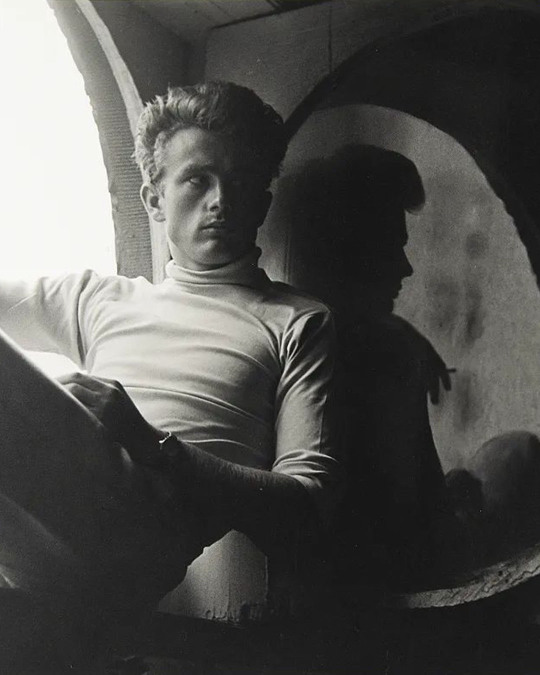
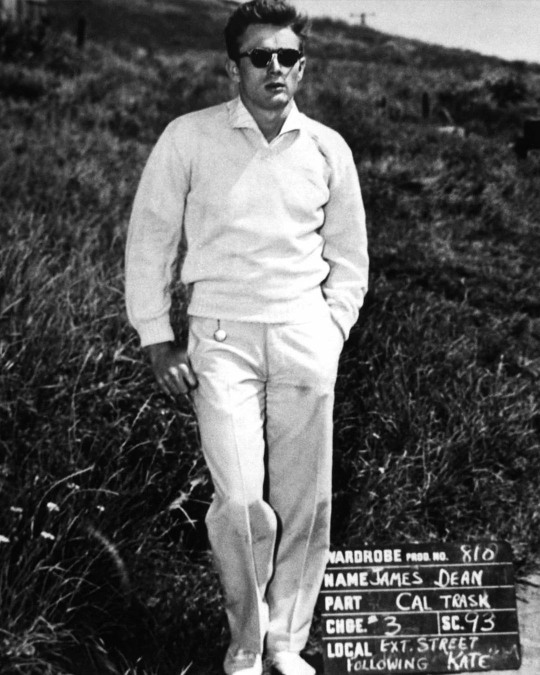

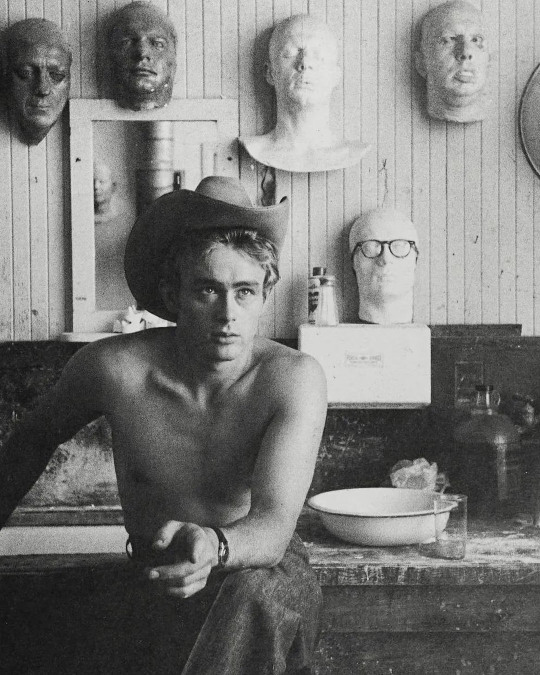

😎 Born on this Day: James Dean 😎
Today, 📆 we reflect on the remarkable achievements of James Dean (#Bi2), a true icon whose legacy endures through the ages. 🎥✨
🎬 James Dean's impact on cinema is immeasurable. With just three major film roles in "Rebel Without a Cause", "East of Eden", and "Giant", he left an indelible mark on Hollywood. 📽️ His performances were raw, emotional, and utterly captivating, earning him posthumous Academy Award nominations and solidifying his status as an acting legend. 🎭
🚀 Dean's persona as a rebellious, brooding, and sensitive young man made him a symbol of youth and defiance. 🔥 He represented a generation's desire to challenge authority and traditional norms, making him a cultural touchstone for those seeking to express their individuality and non-conformity.
📚 James Dean's iconic image as the quintessential "rebel with a cause" continues to shape popular culture. 🕶️ His effortless cool and classic style continue to inspire trends and designers. 👖
🌟 Perhaps one of James Dean's greatest accomplishments is the inspiration he continues to provide to generations. His short but impactful life reminds us to live passionately, pursue our dreams fearlessly, and embrace our individuality. 🫶🥹
#lgbt#queer#bisexuality#bi#lgbtq#lgbtqia#bi pride#bi visibility#bivisibility#representationmatters#rebel without a cause#james dean#old hollywood#icons#iconic#bisexual men#biseuxal#bisexual#bisexaul#bisexuell#lgbt history#lgbt pride
23 notes
·
View notes
Text
DOCUMENTARY: 'Is That Black Enough for You?!?’
Now streaming on Netflix
This is a work of painstaking scholarship that’s also thoroughly entertaining, an essential archival document and testament to a period of American film history unlikely to be repeated. Featuring interviews with Margaret Avery, Harry Belafonte, Charles Burnett, Laurence Fishburne, Whoopi Goldberg, Samuel L. Jackson, Suzanne de Passe, Glynn Turman, Billy Dee Williams, Zendaya, and more. A Netflix release. This documentary from culture critic Elvis Mitchell looks back at cinema and the film industry from film industry pioneers Oscar Micheaux to the independent and major studio filmmakers of the 1970's. Told from the Black American experience, Mitchell skillfully and lovingly directs and narrates a visually impactful documentary.
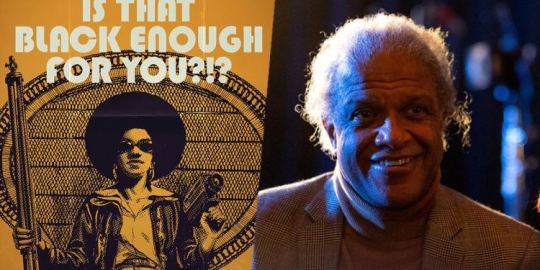




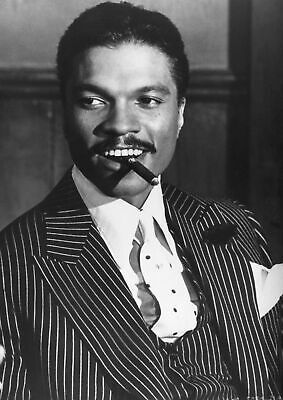
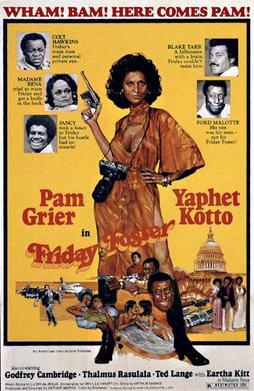
#movies#documentary#horror#action#movie history#black history#music#acting#director#oscar winner#writing#costume#blaxploitation#indie film#innovative#culture
248 notes
·
View notes
Text

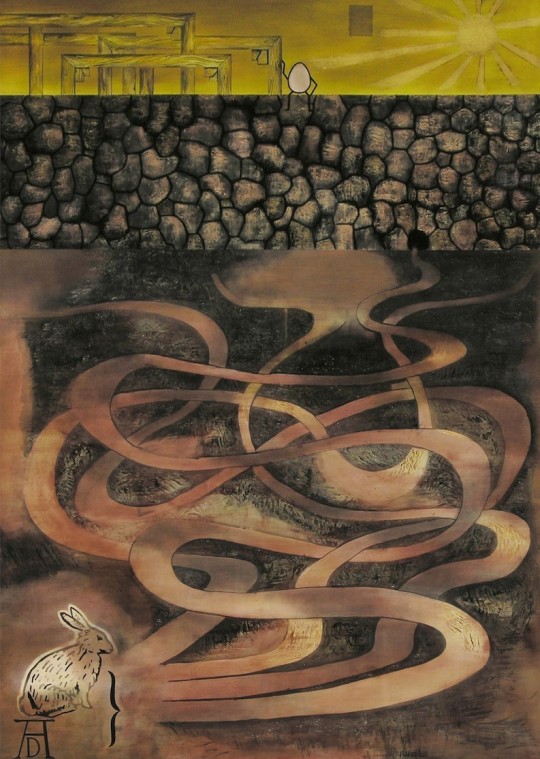
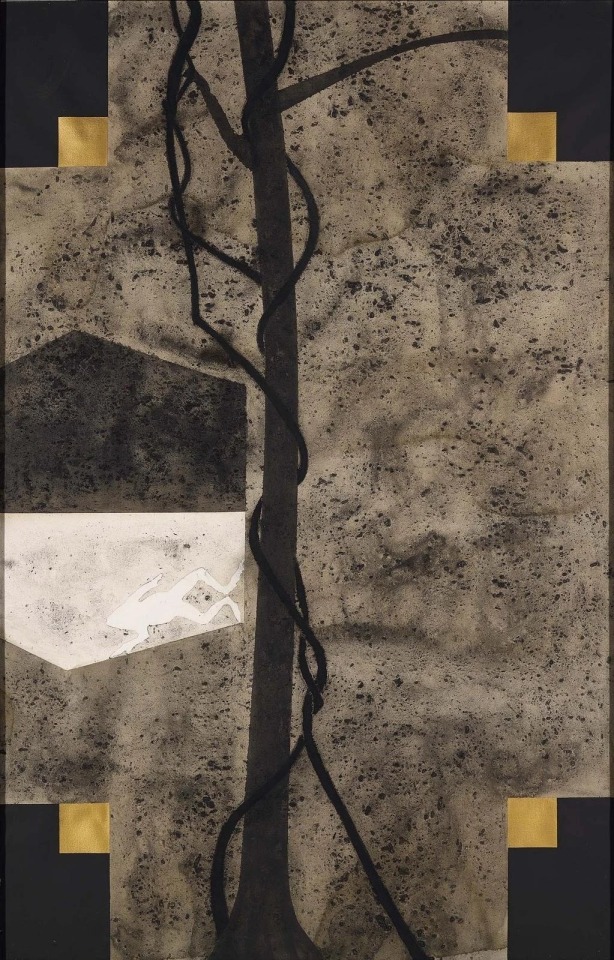
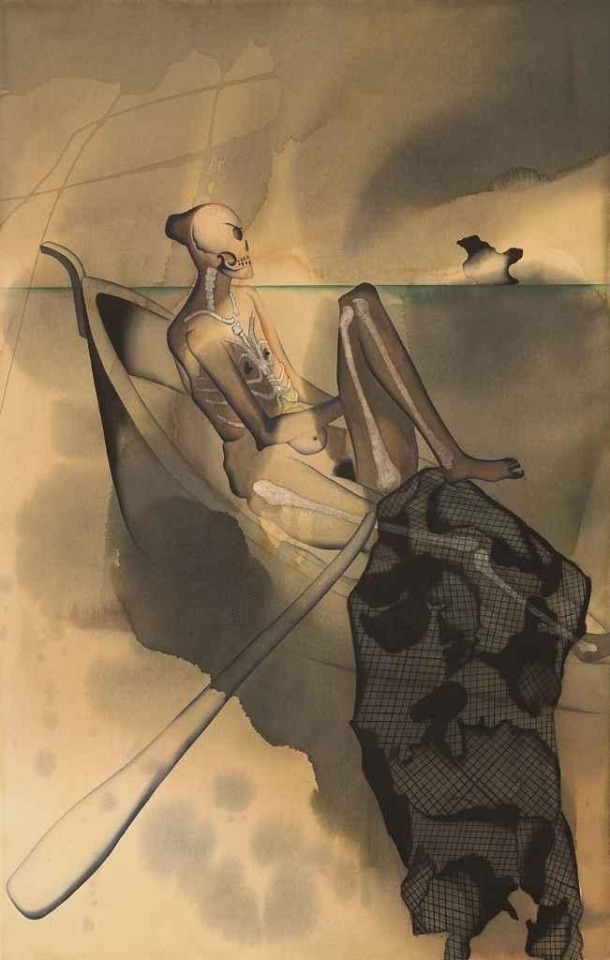

Atul Dodiya b 1959, India
Atul Dodiya was born in 1959 in Mumbai where he lives and works. One of the pioneers of contemporary Indian art, he builds bridges between the history of Indian and Western art. His references to popular culture, cinema and literature point to an underlying political analysis of the aspirations of the Indian middle class and the impact of globalisation on their traditions. Atul Dodiya uses a broad spectrum of media, from his early photo-realism to the works on metal shutters that sealed his international reputation.
39 notes
·
View notes
Note
im looking forward to studying Modern Greek language and culture at university, and simply love your blog. i have fallen in love with this mysterious beauty! which parts of Greek culture, whether it be literature, art, history, schools of thought, anything at all, would you recommend me to look at in further depth? something less talked about, or more niche perhaps? much love x
Ohhh wishing you the best in your future studies! Hoping you will have a great time!
Some recs of things I personally enjoy from the Modern Greek culture, they are subjective, I have mentioned most before, so I am technically playing the broken record again!
Entechno, Rembetiko and classic Laiko music genres. Check the composers Mikis Theodorakis, Manos Hatzidakis, Markos Vamvakaris, Vassilis Tsitsanis and Stavros Xarhakos as a start. But I doubt you won’t learn about them through your studies anyway.
Domenikos Theotokopoulos (El Greco) is my favourite artist but a lot of modern(er) Greek art is very interesting actually
Alexandros Papadiamantis, Nikos Kazantzakis in literature
Erotokritos, both the poetry and the music and all its folk impact
Odysseus Elytis, Giannis Ritsos, Constantine Cavafy and Nikos Kavvadias poetry
I can’t not say the Greek Revolution but I doubt you can escape it in your studies anyway. Also the Axis Occupation Resistance, the Pontic Greek genocide and the population exchange with Turkey. But you will learn about all this, I believe. Check also about the civil war, which I am not sure they will teach you about at length. And the military junta.
Ioannis Kapodistrias and Eleftherios Venizelos as political profile studies. Check out those of Konstantinos Karamanlis and Andreas Papandreou as well if you are interested in politics, not because they were anywhere near as great as the former two but to explore the unbelievable impact they still have in Greek society.
Doesn’t matter if you are Christian or not, I really like Byzantine ecclesiastical music and architecture from an aesthetical standpoint so I recommend
Byzantine and Modern Greek folk fashion
Check out Georgios Gemistus Plethon, the Byzantine Greek Neoplatonic philosopher
Would I deviate if I just said Byzantine history? Oh well. It’s fascinating to explore the “relics” of Byzantium in the collective Modern Greek conscience.
Easter and Carnival traditions, their origins, historical evolution and practice today
Golden age cinema comedies (50s - 70s)
Watch the Island once you can understand Greek well (if you don’t already) or find English subtitles. It’s such a perfect and accurate window to Greek ethos in the first decades of the 20th century
Watch TV comedies of the 90s and 00s.
That might be harder to explore but I like the significance of Epitheórisi (Revue) as a theatrical genre in Greece. In general, check the tradition and huge presence of satire and satire comedians in Modern Greek society. Political correctness has made satire shrink drastically but I think it has an interesting history throughout the 20th century and first years of the 21st.
If you are interested in a school of thought, check out the work of the philosopher Cornelius Castoriadis (1922-1997)
If you don’t speak Greek yet, some of the recs are more niche than others and you will probably have to wait to be somewhat fluent in Greek before you can explore them properly. But music, art, philosophy… you can start with these. As for the history, you can also start, but make sure to also read Greek historiography once you know Greek better because… well.
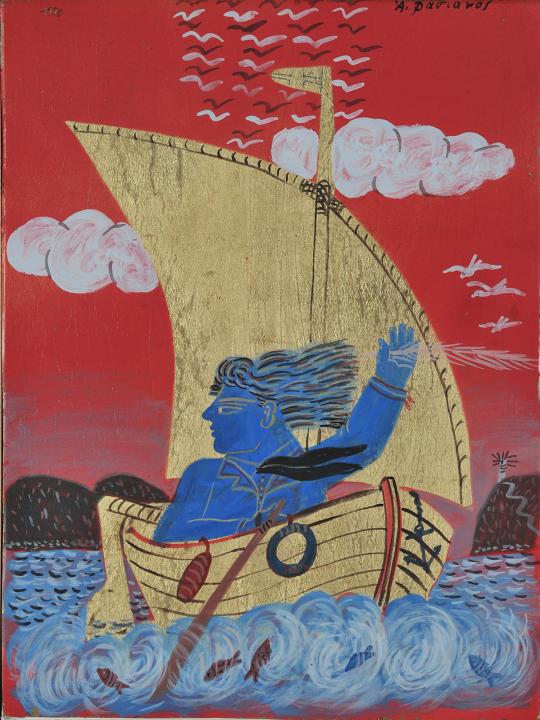
77 notes
·
View notes
Text
I have a big clump of thoughts that have been prompted by reading the LOTR newsletter and Dracula Daily at the same time. I haven't quite figured them all out yet, but I'm going to see if writing them out helps.
Specifically the thing I'm interested in is how these books relate to the time at which they were published.
Let's start with the Lord of the Rings. No matter how much I know that the Lord of the Rings was published in the 1950s, there's always a record scratch moment when I'm reminded of it, for instance by discussion of connections to World War II or even World War I.
Because it feels older, right? That's not just me? It feels like it could plausibly have been published in the 1850s rather than the 1950s. A tweet that I now can't find claimed that the Lord of the Rings is among the only exposure that people today have to non-modern ways of thinking. It's a story that Tolkien consciously crafted as mythology. It should feel old, it's supposed to.
But there's also a relationship between this and the response to Tolkien. There's a quote which I also now can't find, which could equally plausibly have been from Ursula Le Guin or some random tumblr post, which says - to paraphrase - Tolkien is the father of all fantasy, and fantasy writers either accept that (Robin Hobb, Brandon Sanderson) or yell "you're not my real dad!" and write in conscious opposition to him (NK Jemison, George RR Martin, in very different ways). But there's no escaping him.
[Edited: @elven-child suggests this could have been Terry Pratchett, who said:
J.R.R. Tolkien has become a sort of mountain, appearing in all subsequent fantasy in the way that Mt. Fuji appears so often in Japanese prints. Sometimes it’s big and up close. Sometimes it’s a shape on the horizon. Sometimes it’s not there at all, which means that the artist either has made a deliberate decision against the mountain, which is interesting in itself, or is in fact standing on Mt. Fuji.
... which I like better than the Oedipal Tolkien-as-father version.]
Game of Thrones was published in 1991. Assassin's Apprentice in 1995. And those are just the examples I chose from books that I can see from where I'm sitting right now. The all-consuming influence of the Lord of the Rings happened very fast after its publication - again, being published in the 1850s would feel more reasonable for the depth and breadth of its cultural impact. It feels like that should take longer!
Then there's Dracula. Which is as consciously modern as the Lord of the Rings is consciously... historic? Medieval? It's remarkable how little effort it would take to move the story of Dracula to the modern day - if Dracula's castle has no wifi and dodgy mobile phone reception, the rest of the story can play out pretty much as-is, with WhatsApp messages standing in for the telegrams and emails for the letters.
(The only bit I would struggle to believe is that Van Helsing could travel back and forth to Amsterdam that often on the Eurostar or Ryanair without once being delayed.)
That's fascinating to me because Dracula is also a call-back to an older mode of writing, just as Tolkien drew on Norse sagas and Old English literature. An epistolary gothic novel is very 18th century. Even in terms of the late 19th century gothic revival, Dracula came along pretty late - Carmilla was 25 years earlier. But instead of the weight of the history of gothic literature dragging Dracula backward, it feels like Dracula drags the rest of it forward instead.
In some ways, I think this is literally what happened. The horror tropes of Dracula became the horror tropes of 20th century cinema, and the result is that the content and themes of gothic literature are familiar to us. We understand most of what Northanger Abbey is parodying even if we've never read the Mysteries of Udolpho or any of the other novels that Austen satirises. The effect of Dracula's popularity has been to keep itself current in ways that Bram Stoker could never have anticipated or planned.
I'm not sure I've figured out exactly what my point is here, but it was fun to think about anyway.
331 notes
·
View notes
Text
Appreciating+analyzing Brokeback Mountain's first tent scene for it's 18th anniversary
It’s been 18 years since Ang Lee used his familarity of repression from his culture to bring Brokeback Mountain to life. Starring legendary actor, Heath Ledger, and his co-star, best friend + the godfather of his child, Jake Gyllenhaal.
And i want to show appreciation to the first tent scene. It’s the most famous scene along with Jack’s final speech. I guarantee that most non-viewer knows about either one or both of these. And while this sex scene is very impactful and a few ppl also like this scene, it's usually met with two types of reactions. First, plain homophobia. Like when ppl just immediately left the theatre, outraged or disgusted.
Ppl made parodies about this, and there was a trend of ppl showing someone this scene out of context and enjoy the shocked, horrified or disgusted reaction
On the flip side, there’s the ppl who loves+appreciates this film but has valid criticisms about this scene. It’s not realistic when it comes to prep. There’s the beans thing (even though Jack threw a whole tantrum about hating to eat this, so Ennis had to give him alternatives like hunting elk+getting soup).either way, that beans aspect is something ppl can't look past,therefore can't take seriously. This scene is too rough for some, too short for others. Or it feels really sanitized to them.
I see all of these points. I actually disliked this scene as well on my first watch when i was a young teen.However, as i grew older and i rewatched this film a few times, i developed a huge appreciation for this scene. i geninuely love this now. And coming from an aro/ace person, this one of my favorite scenes in cinema. And here's why...
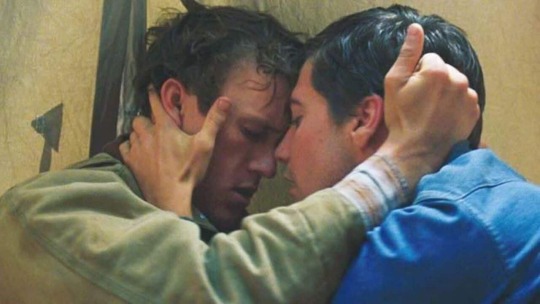
We know that Ennis is a virgin from the ‘sinner’ talk. And later on, you get the details of Ennis' trauma from being forced to see the horrific aftermath of a hate crime. So growing up, as he went through puberty…i don’t think he let himself fantasize about guy. And also, his parents were methodists, so add religion in his childhood.
So this isn’t only about him giving into his lust for Jack, this is about struggling with all these repressed emotions of fear, shame. He grew up, being denied the most simple pleasure of life. So this isn’t just about this sexual release, it’s a huge, shattering emotional release as well.
And putting all this together, this backstory is the reason why this scene is vital. I highly doubt that with all this repression+trauma, that Ennis would make any kind of move, romantic or sexual. Heck, i don’t even think he was fully aware of his feelings until this moment. It implied in the short story that even though he doesn’t know why he’s so happy around Jack, he could still just palm the white of the moon.
So i believe this is the only way he could face not only his lust, but his emotions. Having Jack being aroused and explicitly state with his actions how much he wanted this
This being THE MOMENT where Ennis could experience true freedom. Let the restraints go and just vulnerable with another person. And i think it being it at night, in the dark helped give him that extra courage.And because of all the pent up lust went with his emotions, he just lost control at the sound of the belt unbuckle and just roughly took Jack on the spot.
I like how this subverts my expectation. Jack is the impulsive, extroverted and bold one. And also, i'm used to scenes where when someone is hesitant or really scared to be intimate with someone, they are usually soothed and they will slowly let themself experience pleasure. But instead, Ennis is overcome with lust, and fully takes over.
And the moments after Jack is pushed down just gets me. You hear tiny little noises of excitement from him, cuz the shy, reserved man he knew suddenly shoved him down, shaking hard from lust+impatience. And he is just waiting, while Ennis is rushing to undo his pants then practically rips off Jack's . No pleasantries, nothing, just does him raw. Is this ideal in real life? Hell no. But as a fantastical concept, i find that incredibly hot. I may not find ppl sexually attractive, but i appreciate a spicy scenario, as long as i’m not involved.
And i appreciate the film not framing the loss of Ennis' virginity as comedic or even victorious, like a prize he finally won. I often see this in media with male characters having sex for the first time. This, while abrupt, is still taken seriously. Ennis is really clumsy, and even though he’s doing the work, he’s not the one in control. He is barely hanging on, really overwhelmed by all these new sensations. The surprise, the bliss and no matter how hard he tried he couldn’t last long. The way he pressed his forehead onto Jack’s back as the orgasmic sensations abruptly hits him.
And Jack aggressively slamming on the tent floor when the release hits him. Iconic. Apparently, Jake G added that in, which shocked Ang lee in a good way. And yeah, that definitely adds to the level of intensity that this whole scene built up to.
And there’s also this brief scene i like where the two, especially Ennis, is just WIPED OUT. And while a part of me wondered why it’d be like if this scene lasted longer, I think it also really adds to the intensity of Ennis’ experience. The physical and the emotional release is so monumental for him that not only he wasn't able to last long, it also just shattered every ounce of his physical energy.
And i like how it didn’t linger on the afterglow. It’s a quick cut to the outside shot of their tent, as you still hear their panting. I liked this because it emphasizes how this was truly impulsive this act was. How desperate they were to just feel each other that they even couldn’t utter a single word. And they couldn't even take the time to fully undress or enjoy each other's bodies yet. This was just instinctive and animalistic.
And it's the fact that there's no music, and it's all shot close up, alternating from Jack+Ennis that makes it feel more authentic. To me, it doesn't feel staged, and that again, just adds so much.
And i love the contrast between this and the second tent scene. Ennis surrenders in both but has different reactions. Because of the overwhelming lust+emotions, this moment is rushed.
But after struggling to process that he found so much freedom+pleasure in something society deems immoral, he gives into his desires and enters the tent. Now since the physical barrier has been crossed, and the pent up lust is satiated, he is forced to face his emotions. And allow Jack to fully see him the most vulnerable he's ever been. The way he clutches his hat like a shield and struggles to make eye contact.
The way Jack sees all this and responds with so much tenderness. How he kissed him, whispers reassurances and cradles him. And Ennis feels safe enough to properly enjoy Jack's body. And feel his chest. That soft kiss he plants a moment later. Just gives me so many butterflies.
On the first watch, it's really sad to see Ennis so scared. But on a rewatch, when you know the details of his trauma. Soul-shattering. You fully realize how much he needed to be soothed +held like this😭😭

And then i found this great website, Brokeback Mountain Love Scene Tent – Book & Movie Library (whythebookwins.com)
where it talks about the symbolism of the nature+ tent. I love how it points out how nature is their silent witness. Whether it’s for their frantic first time, or more tender ones that happen later on. And how the tent is so confined, which reflects Jack+Ennis’ relationship. Because of our cruel society, they had to hide their love+vulnerability from the world. And because of Ennis’ trauma and internal struggle, it’s only this tent on Brokeback Mountain, that is truly becomes their only safe haven.
Heath+Jake did fantastic in both of these scenes. Especially the first one. I'm glad that there were proper measures to make sure these two were very comfortable and they weren't exploited in any way.
#brokeback mountain#jack twist#ennis del mar#heath ledger#jake gyllenhaal#gay representation#gay pride#lgbtqiia+#lgbtq rights#lgbtq#lgbtqia#movies#emotional#i love this movie#gay movies#lgbt film#lgbt movie#films#romance films#sad movies#media analysis#queer#cinema#character analysis
21 notes
·
View notes